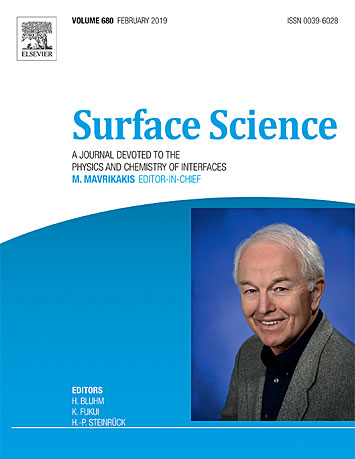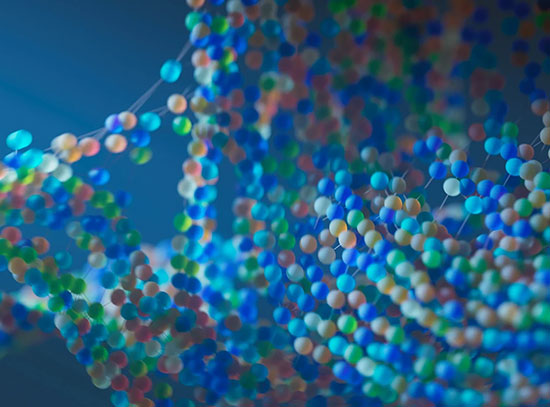Journal Special Issues Honor Chemists Radoslav Adzic and Jan Hrbek
The Journal of the Electrochemical Society and Surface Science recently published special issues recognizing the contributions of two Brookhaven Lab chemists
January 22, 2019
Two chemists from the U.S. Department of Energy’s (DOE) Brookhaven National Laboratory were recently honored by journal special issues: senior chemist emeritus Radoslav Adzic in the Dec. 2018 Journal of the Electrochemical Society Focus Issue on Electrocatalysis, and the late former senior chemist Jan Hrbek in the Jan. 2019 Surface Science Virtual Special Issue.
“The efforts of Radoslav Adzic and Jan Hrbek over the past two decades were central to the formation of Brookhaven Lab’s world-recognized efforts in electrocatalysis and catalysis,” said Alex Harris, chair of Brookhaven Lab’s Chemistry Division. “It’s wonderful that both are being honored by special journal issues shortly after their retirements. The issue in honor of Radoslav highlights his amazing range of contributions from basic research to applications in electrocatalysis for new energy conversion pathways. The issue in memory of Jan demonstrates his enduring contributions in connecting fundamental studies of surfaces to the understanding and improvement of catalytic processes for chemistry.”
Radoslav Adzic
As described in a preface written by Adzic’s former postdoc Minhua Shao, Adzic is being recognized for “his great contributions to electrocatalysis over the past five decades and the central role his work has played in the development of many electrochemical systems, including fuel cells, metal-air batteries, electrolyzers, and sensors.”
Adzic’s research has focused on surface electrochemistry and electrocatalysis. Early on in his career, Adzic demonstrated the large catalytic effects resulting when lead, tin, and other metals were deposited on platinum, palladium, rhodium, ruthenium, and silver surfaces for various electrochemical reactions. He was also part of a team who was the first to demonstrate the structural dependence of the oxidation of formic acid, methanol, and formaldehyde on single-crystal platinum electrodes in acidic solutions.
At Brookhaven Lab, Adzic applied a synchrotron-based x-ray scattering technique at the National Synchrotron Light Source (NSLS)—a former DOE Office of Science User Facility that has since been replaced by NSLS-II—to study the electrochemical interfaces between metal, anion, mixed-metal anion, and carbon monoxide layers on metallic surfaces. He also pioneered the development of platinum-monolayer electrocatalysts, highly influential work that translated basic research into improved next-generation fuel cells.
Adzic joined Brookhaven Lab in 1979 as a visiting scientist and was hired in 1992 as a senior research associate, following positions as a research associate at Case Western University and professor at the Center for Multidisciplinary Studies in Serbia at the University of Belgrade, his alma mater. He was named chemist in 2001 and leader of the Surface Electrochemistry and Electrocatalysis Group in 2004. In 2005, he became a tenured senior chemist. Following his retirement from Brookhaven in 2017, he was named senior scientist emeritus.
Adzic holds a PhD in chemistry from the Institute for Chemistry, Technology, and Metallurgy at the University of Belgrade, where he also received a BS in faculty of technology. He is the recipient of several awards—including the 2006 Energy Technology Award of the Electrochemical Society, Battelle’s 2012 Inventor of the Year Award, and the 2008 and 2012 DOE Hydrogen Program Research & Development Awards—and is an elected fellow of the Electrochemical Society and the International Society of Electrochemistry.
Jan Hrbek

Surface Science recognized Brookhaven Lab chemist Jan Hrbek in a special issue.
“Jan Hrbek was a chemical scientist, mentor, and pioneer in the field of surface science,” wrote group leader Jose Rodriguez and chemists Sanjaya Senanayake and Ping Liu—all of Brookhaven’s Catalysis: Reactivity and Structure (CRS) Group—in the preface to the special issue. “Jan made many scientific contributions that enabled a fundamental understanding of the importance of surface structure at the atomic scale, interfaces and their unique electronic and chemical state which can be exploited to tune catalytic chemistry.”
Hrbek used various imaging techniques—including scanning tunneling microscopy, atomic force microscopy, and low-energy electron microscopy—to characterize surface atomic structures and chemical states. In particular, he studied metal, oxide, sulfide, graphite, and graphene surfaces, and surface reactions including carbon monoxide oxidation, sulfur poisoning, and alcohol reforming. Hrbek was also a leader in using x-ray absorption spectroscopy and photoemission to study bonding in bimetallic surfaces. He established the foundations of the CRS Group’s continuing strong connection to DOE light source facilities such as NSLS and now NSLS-II in pursuit of such surface and catalysis studies.
Hrbek began his career as a chemist at the Heyrovsky Institute of Physical Chemistry. He then briefly served as a research chemist at ExxonMobil before joining Brookhaven’s Chemistry Division in 1984. From 1984 until his retirement from Brookhaven in 2014, Hrbek was promoted to senior chemist, leader of the CRS Group, and head of the Chemistry Division.
Hrbek received a BS and MS in physical chemistry from Charles University in Prague and a PhD in physical chemistry from the Czechoslovak Academy of Sciences. Over his career, he published more than 220 peer-reviewed publications exceeding 8000 citations.
Brookhaven National Laboratory is supported by the Office of Science of the U.S. Department of Energy. The Office of Science is the single largest supporter of basic research in the physical sciences in the United States, and is working to address some of the most pressing challenges of our time. For more information, please visit science.energy.gov.
Follow @BrookhavenLab on Twitter or find us on Facebook.
2019-14333 | INT/EXT | Newsroom











